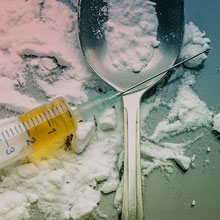People who have lost a friend or loved one to opioid addiction know about naloxone.

In December, Georgia became the 36th state to legalize over-the-counter sale of naloxone, which can save the life of someone who has overdosed on painkillers, heroin, or other opioid drugs. In the past, only someone with a doctor’s prescription could buy this medication at a pharmacy.
Now anyone can buy it, with no prescription needed.
Naloxone is sold as Narcan Injection or Narcan Nasal Spray. Either can rescue a person with opioid overdose signs such as slowed breathing or unresponsiveness. A typical retail price is $45 for the injectable and $110 for the spray.
Many people would never think of looking for naloxone when they shop at the drugstore. But in states where over-the-counter sales have been legalized, some people have gone out to buy the medication as soon as it was available.
“These are usually the people who have lost someone to overdose or have been personally affected by it in some way,” says Jeff Bratberg, a clinical professor of pharmacy at the University of Rhode Island whose research focuses on changing patterns of naloxone use.
“They’re also the people that don’t care about the stigma of addiction or carrying it,” Bratberg says. “They are helping normalize naloxone as the standard for opioid safety.”

Police and sheriff’s departments across Georgia are carrying naloxone in case of overdose emergencies.
Gov. Nathan Deal effectively legalized over-the-counter naloxone sales in Georgia when he signed an executive order in December allowing pharmacists to dispense the drug without a prescription. Executive orders are basically provisional measures, and a state Senate bill is now being considered to make the authorization a part of Georgia law.
How it works
In an overdose situation, naloxone kick-starts breathing.
“The most dangerous effect of opioids is respiratory depression. That’s what most people die of if they overdose,” says brain researcher Phillip Holmes, chair of the neuroscience program at the University of Georgia.

“Naloxone reverses this toxic effect by acting as a neurotransmitter receptor blocker. The drug targets the same receptors as opioids and binds to these,” says Holmes.
When Narcan is injected or sprayed into the nostrils of people who have stopped breathing, that may be enough to resuscitate them. But it may not. CPR should be started if the overdosed person doesn’t start breathing immediately; then a second dose can be given after a few minutes
The drug is no harder to use than any other pre-loaded syringe or nasal spray, and instructions are included with every box.
“It’s important to reassure people that administration of the drug is not going to result in a violent reaction,” says Bratberg.
“An overdose is an emergency. If you don’t remember any of the steps for administering naloxone, you can call 911 and most dispatchers in the country can walk you through the process of naloxone administration,” he says.
The overdose problem is huge
Even today, it’s easy to underestimate how prevalent opioid use really is. According to the CDC, the number of opioid-induced drug overdoses has quadrupled since 1999.
CDC’s most recent count shows that 1,302 Georgia residents died due to overdose in 2015. Nationwide, opioid overdose killed 33,091 people that year

These numbers indicate how dire the opioid crisis has become: Drug overdoses kill more people than car crashes or gun violence.
“You may think that you don’t know somebody at risk, but if you go out in public, you’re going to encounter somebody [with an addiction to opioids],” says Karen Skinner, clinical director at the Athens Addiction Recovery Center.
“This crisis is not going away, it’s not abating. Much like knowing CPR, carrying naloxone is a preventative step we can all take,” adds Bratberg, the Rhode Island researcher.
While experts agree that naloxone is a lifesaver, some see possible adverse consequences of selling it in drugstores.
“Having naloxone on hand is great for the parents or caregivers of someone addicted to opioids,” says Skinner. “It can give them the feeling of security and power in a situation in which they may otherwise feel powerless.”
At the same time, she says, “there’s always the risk of an active addict keeping naloxone to push the limits of overdose, rather than seeking recovery treatment.”
Bratberg thinks the need to have the drug available outweighs such concerns.

“Naloxone is like a fire extinguisher,” he says, something that can be vital in an emergency. Everyone should know how to use it if an opioid user stops breathing, he says.
According to the CDC, one in four people with long-term opioid prescriptions, often written for back or neck pain, eventually struggle with opioid use disorder.
Making Narcan available over the counter can be a conversation starter for people who have never used opioids, those who have used them for valid medical reasons and those who actually abuse them. The ultimate goal of such conversations would be to raise everyone’s awareness of opioid dangers.
Even people who are addicted may not recognize that slowed or difficult breathing can signal a potentially fatal overdose.
Bratberg recalls a conversation with a man who was unaware of this despite abusing opioids for a decade.
Education is crucial now that naloxone is more widely available, Bratberg says. “We’re trying to make the public more aware. We’re trying to make caregivers more aware.”
Kristina Griffith is a graduate student at the University of Georgia pursuing a degree and career in journalism. Having obtained her bachelor’s degree in psychology, she has a special interest in topics relating to addiction and other mental health disorders.

